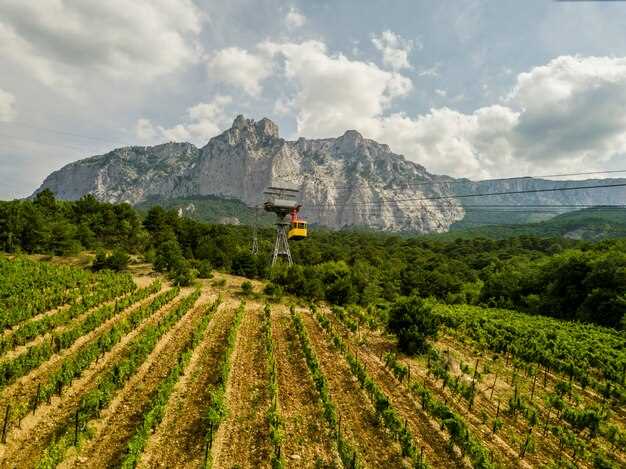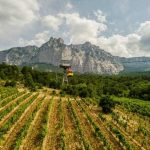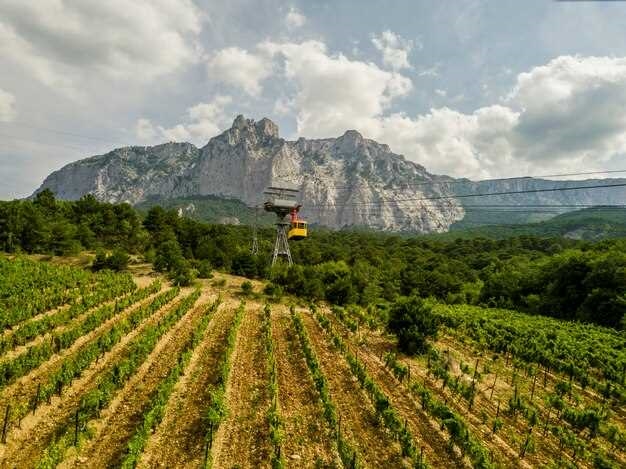
When it comes to the world of wine, there are few countries that can rival the rich and diverse offerings of Italy. From the rolling hills of Tuscany to the sun-drenched vineyards of Sicily, the Italian wine industry has long been celebrated for its exceptional quality and distinct flavors. However, what sets Italian wines apart from their counterparts around the world is the concept of terroir, a term that encompasses the unique combination of soil, climate, and geography that influences the grapes and ultimately the taste of the wine.
Terroir, often referred to as the “sense of place” in winemaking, is a concept deeply ingrained in Italian viticulture. It is the understanding that the characteristics of a wine are not solely determined by the grape variety or winemaking techniques, but rather by the specific environmental factors in which the grapes are grown. The soil composition, including its mineral content and drainage capabilities, plays a crucial role in shaping the flavors and aromas of the grapes. The climate, with its temperature, rainfall, and sunlight patterns, influences the ripening process and the balance of acidity and sweetness in the grapes. And finally, the geographical location, such as the altitude and proximity to bodies of water, can further impact the overall quality and style of the wine.
Italy’s diverse terroir is a result of its varied landscape, which encompasses everything from mountains and hills to coastal plains and volcanic regions. Each wine-producing region in Italy has its own unique terroir, resulting in a wide range of wine styles and expressions. For example, the volcanic soils of Mount Etna in Sicily contribute to the vibrant acidity and minerality found in the region’s white wines, while the limestone-rich soils of Chianti Classico in Tuscany lend a distinct elegance and structure to the region’s renowned red wines.
Exploring the influence of terroir on Italian wines is not only a fascinating journey into the world of viticulture, but it also offers a deeper appreciation for the complexity and diversity of Italian wine. By understanding the interplay between soil, climate, and geography, wine enthusiasts can better comprehend the nuances and characteristics of their favorite Italian wines, and perhaps even discover new and exciting bottles to savor. So, whether you’re a seasoned oenophile or just beginning to explore the world of wine, delving into the influence of terroir on Italian wines is sure to enhance your tasting experience and ignite a passion for the art of winemaking.
The Role of Terroir in Italian Wine Production
Terroir plays a crucial role in the production of exquisite Italian wines, shaping their unique characteristics and flavors. It encompasses a combination of factors, including the soil composition, climate conditions, and geographical features, which all contribute to the distinctiveness of the wines produced in different regions of Italy.
Unveiling the Essence of Terroir
Terroir encapsulates the essence of a specific wine-growing region, reflecting its natural environment and cultural heritage. It encompasses the intricate relationship between the soil, climate, and geography, which collectively influence the grapevines’ growth and the resulting wine’s flavor profile. The concept of terroir goes beyond the mere physical attributes of the land; it encompasses the intangible qualities that are passed down through generations of winemakers, shaping their techniques and traditions.
The Interplay of Soil, Climate, and Geography
The soil composition is a fundamental component of terroir, as it provides the foundation for the grapevines to thrive. Different soil types, such as limestone, clay, or volcanic ash, impart distinct mineral characteristics to the grapes, influencing the wine’s taste and aroma. Additionally, the climate conditions, including temperature, rainfall, and sunlight exposure, play a crucial role in determining the grape ripening process and the resulting flavor complexity. The geographical features, such as altitude and proximity to bodies of water, further contribute to the unique terroir of each Italian wine region.
Understanding the role of terroir in Italian wine production allows wine enthusiasts to appreciate the diversity and complexity of the wines produced in different regions. It highlights the importance of preserving and respecting the natural environment and cultural heritage that contribute to the creation of exceptional Italian wines.
Unveiling the Secrets of Italian Wine: Understanding Soil Composition
Delving into the depths of Italian wine production, one cannot overlook the crucial role played by the composition of the soil. The intricate relationship between the soil and the vines it nurtures is a key factor in shaping the unique characteristics and flavors that define Italian wines. In this section, we will explore the fascinating world of soil composition and its profound influence on the quality and distinctiveness of Italian wines.
Unearthing the Diversity: Soil Types in Italian Wine Regions
Italy’s diverse terroir encompasses a wide range of soil types, each with its own distinct properties and contributions to the final product. From the volcanic soils of Mount Etna in Sicily to the limestone-rich soils of Tuscany, the country boasts a remarkable variety of soil compositions. These variations in soil types create a rich tapestry of flavors and aromas, making Italian wines truly unique.
To better understand the impact of soil composition, let us delve into some of the prominent soil types found in different Italian wine regions:
| Region | Soil Type | Characteristics |
|---|---|---|
| Piedmont | Calcareous Clay | Provides excellent drainage and imparts elegance to the wines |
| Tuscany | Alberese | Rich in limestone, enhances the structure and aging potential of the wines |
| Campania | Tuff | Volcanic ash soil, adds minerality and complexity to the wines |
The Influence of Soil on Grape Varieties and Wine Styles

Not only does soil composition affect the overall quality of Italian wines, but it also plays a significant role in determining the grape varieties that thrive in specific regions. Different grape varieties have varying preferences for soil types, and this symbiotic relationship between the vines and the soil contributes to the diverse range of wine styles found throughout Italy.
For instance, the Sangiovese grape, which is the backbone of many renowned Tuscan wines, flourishes in the well-drained, limestone-rich soils of the region. On the other hand, the Nebbiolo grape, responsible for the prestigious Barolo and Barbaresco wines of Piedmont, thrives in the calcareous clay soils found in the Langhe region.
Understanding the intricate relationship between soil composition, grape varieties, and wine styles is essential for appreciating the nuances and complexities of Italian wines. By unraveling the secrets hidden beneath the surface, we gain a deeper appreciation for the artistry and craftsmanship that goes into every bottle of Italian wine.
Climate Factors: How Weather Patterns Shape Italian Wine
Weather patterns play a crucial role in shaping the characteristics and quality of Italian wines. The unique combination of temperature, precipitation, sunlight, and wind in different regions of Italy creates distinct microclimates that influence the growth and development of grapevines. Understanding these climate factors is essential for appreciating the diversity and complexity of Italian wines.
Temperature: The temperature variations throughout the year significantly impact the ripening process of grapes. Cooler temperatures in northern regions, such as Piedmont and Trentino-Alto Adige, result in wines with higher acidity and lower alcohol content. In contrast, warmer temperatures in southern regions, like Sicily and Puglia, lead to riper grapes and fuller-bodied wines. The delicate balance between warmth and coolness determines the overall flavor profile of Italian wines.
Precipitation: The amount and timing of rainfall greatly influence grape growth and vine health. Regions with moderate rainfall, such as Tuscany and Umbria, provide optimal conditions for grape cultivation. Excessive rainfall can dilute flavors and increase the risk of fungal diseases, while drought conditions can stress the vines and reduce yields. Finding the right balance of precipitation is crucial for producing high-quality Italian wines.
Sunlight: Sunlight is essential for photosynthesis, the process by which grapevines convert sunlight into sugars. The duration and intensity of sunlight exposure affect the sugar levels in grapes, which in turn impact the alcohol content and sweetness of the resulting wines. Southern regions, such as Calabria and Sardinia, receive more sunlight, resulting in wines with higher alcohol content and riper fruit flavors. In contrast, cooler regions like Veneto and Friuli-Venezia Giulia produce wines with lower alcohol content and more delicate flavors.
Wind: Wind patterns can have a significant impact on grapevines, affecting their growth, health, and overall quality. Gentle breezes can help regulate temperature and prevent the development of fungal diseases, while strong winds can damage the vines and reduce yields. Coastal regions, such as Liguria and Campania, benefit from cooling sea breezes, which contribute to the unique characteristics of their wines. Understanding the influence of wind patterns is crucial for vineyard management and the production of exceptional Italian wines.
By considering the various climate factors, winemakers and wine enthusiasts can gain a deeper appreciation for the intricate relationship between weather patterns and the flavors, aromas, and textures found in Italian wines. Exploring the diverse terroirs of Italy allows for a truly immersive and enriching wine experience.
From the Alps to the Mediterranean: The Geographical Diversity of Italian Wine Regions
Exploring the vast and diverse landscape of Italy, one can uncover a rich tapestry of wine regions that span from the majestic Alps to the sun-kissed shores of the Mediterranean. Each region boasts its own unique terroir, shaped by the interplay of soil composition, climate patterns, and geographical features. This geographical diversity plays a pivotal role in the production of Italian wines, contributing to the distinct flavors and characteristics that have made them renowned worldwide.
To truly understand the influence of terroir on Italian wines, one must delve into the varied landscapes that define the country’s wine regions. From the rugged terrains of Piedmont, nestled at the foothills of the Alps, to the rolling hills of Tuscany, home to the iconic Chianti vineyards, the geographical diversity of Italy offers a multitude of microclimates and soil types that contribute to the complexity and diversity of its wines.
Heading south, the volcanic soils of Campania and Sicily impart a unique mineral character to the wines, while the coastal regions of Liguria and Sardinia benefit from the cooling maritime breezes, resulting in crisp and refreshing white wines. The central regions of Umbria and Marche, with their gentle slopes and temperate climates, produce elegant and balanced reds.
Italy’s geographical diversity is not limited to its mainland, as the country’s islands also play a significant role in the world of Italian wine. The island of Sardinia, with its rugged terrain and Mediterranean climate, is known for its robust red wines, while Sicily, the largest island in the Mediterranean, produces a wide range of wines, from rich and full-bodied reds to aromatic whites.
As one explores the geographical diversity of Italian wine regions, it becomes evident that the interplay between soil, climate, and geography is a fundamental factor in shaping the character and quality of Italian wines. From the soaring peaks of the Alps to the sun-drenched shores of the Mediterranean, Italy’s diverse terroir offers a captivating journey for wine enthusiasts, showcasing the remarkable range of flavors and styles that make Italian wines truly exceptional.
| Region | Main Characteristics |
|---|---|
| Piedmont | Rugged terrain, foothills of the Alps, complex red wines |
| Tuscany | Rolling hills, Chianti vineyards, elegant red wines |
| Campania | Volcanic soils, mineral character, aromatic whites |
| Sicily | Varied terroir, diverse range of wines |
| Liguria | Coastal region, cooling maritime breezes, crisp whites |
| Umbria | Gentle slopes, temperate climate, balanced reds |
Terroir and Grape Varieties: The Perfect Match for Italian Wine
When it comes to Italian wine, the combination of terroir and grape varieties plays a crucial role in creating exceptional and unique flavors. The intricate relationship between the land and the grape varieties grown on it results in wines that are truly representative of their origin.
Terroir, a term often used in the world of wine, refers to the combination of factors that influence the growth and development of grapes. These factors include the soil composition, climate conditions, and geographical features of a specific region. Each terroir imparts distinct characteristics to the grapes, which in turn contribute to the overall flavor profile of the wine.
Italian wine is renowned for its diversity, and this can be attributed to the vast array of grape varieties cultivated throughout the country. From the robust Sangiovese of Tuscany to the elegant Nebbiolo of Piedmont, each grape variety thrives in specific terroirs, showcasing its unique qualities.
For instance, the volcanic soils of Mount Etna in Sicily provide the perfect environment for growing Nerello Mascalese grapes, resulting in wines with a vibrant acidity and a mineral-driven character. On the other hand, the limestone-rich soils of the Chianti region in Tuscany contribute to the elegance and structure of Sangiovese-based wines.
Understanding the relationship between terroir and grape varieties is essential for both winemakers and wine enthusiasts. It allows winemakers to make informed decisions about which grape varieties to cultivate in a particular terroir, ensuring the best expression of the land. For wine enthusiasts, it provides a deeper appreciation and understanding of the complexities behind their favorite Italian wines.
- Exploring the diversity of Italian grape varieties and their preferred terroirs
- The impact of soil composition on the flavor profile of Italian wines
- Climate conditions and their influence on grape development in different regions
- Geographical features and their role in shaping the character of Italian wines
- The art of matching grape varieties with specific terroirs to create exceptional Italian wines
By delving into the intricate relationship between terroir and grape varieties, we can gain a deeper understanding of the factors that contribute to the excellence of Italian wine. From the rolling hills of Tuscany to the sun-drenched vineyards of Sicily, each region offers a unique combination of terroir and grape varieties, resulting in a diverse and captivating wine landscape.
The Art of Winemaking: How Italian Producers Harness the Power of Terroir
Unlocking the true potential of a wine requires more than just the right grape variety and winemaking techniques. Italian winemakers have mastered the art of harnessing the unique characteristics of their terroir to create exceptional wines that reflect the essence of their land. Through a deep understanding of the soil, climate, and geography, these producers are able to craft wines that showcase the distinct flavors, aromas, and textures that make Italian wines so renowned worldwide.
Terroir: The Essence of Italian Wines
Terroir, a term often used in the world of wine, encompasses the combination of factors that influence the character of a wine. It goes beyond the grape variety and encompasses the soil composition, climate, topography, and even the cultural practices of the region. Italian winemakers recognize that the terroir is the foundation upon which their wines are built, and they strive to preserve and enhance its unique qualities.
The Role of Soil, Climate, and Geography
Italian winemakers understand that the soil, climate, and geography of a vineyard have a profound impact on the grapes and, ultimately, the resulting wine. The soil composition, including its mineral content, drainage capabilities, and pH levels, influences the vine’s ability to absorb nutrients and water, which in turn affects the grape’s flavor profile. The climate, including temperature, rainfall, and sunlight exposure, determines the grape’s ripening process and the development of its sugars, acids, and phenolic compounds. The geography, such as the altitude and slope of the vineyard, can also influence the microclimate and the vine’s exposure to sunlight and wind, further shaping the wine’s characteristics.
Italian winemakers carefully analyze and select the grape varieties that are best suited to thrive in their specific terroir. They adapt their viticultural practices, such as pruning, irrigation, and canopy management, to optimize the grape’s growth and ensure its full expression of terroir. Additionally, they employ traditional winemaking techniques, such as fermentation and aging in oak barrels, to further enhance the wine’s complexity and depth.
| Soil | Climate | Geography |
|---|---|---|
| Mineral-rich | Mediterranean | Hilly |
| Well-drained | Warm summers, mild winters | Mountainous |
| Alkaline pH | Moderate rainfall | Coastal |
Italian winemakers take pride in their ability to translate the unique characteristics of their terroir into the bottle. Each sip of Italian wine tells a story of the land it was born from, capturing the essence of the soil, climate, and geography. It is this art of winemaking, this harmonious collaboration between nature and human intervention, that sets Italian wines apart and makes them a true reflection of their terroir.






















